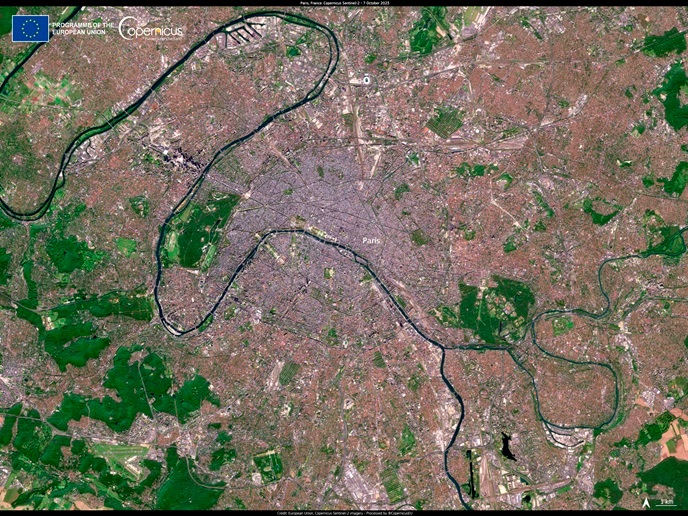Turning Copernicus data into meaningful urban climate action
Identifying risks associated with climate change is critical to ensuring that our cities are made safe and liveable for future generations. Anticipating the challenges ahead means we can adapt our urban environments to mitigate climate change, and better cope with climate change impacts such as heatwaves and flooding. Copernicus(opens in new window), the Earth observation (EO) component of the EU Space programme, provides urban planners with a huge amount of high-quality data, but they often face difficulties processing and analysing all this information and turning it into actionable information. “Urban communities face significant obstacles in effectively using EO intelligence,” says CURE(opens in new window) project coordinator Nektarios Chrysoulakis from the Foundation for Research and Technology – Hellas(opens in new window) (FORTH) in Greece. “We recognised a need to better integrate EO programmes’ outputs into urban resilience strategies, in the face of these climate change challenges.” To achieve this, the project gathered targeted environmental information from four core Copernicus services: the Copernicus Land Monitoring Service(opens in new window) (CLMS), the Copernicus Atmosphere Monitoring Service(opens in new window) (CAMS), the Copernicus Climate Change Service(opens in new window) (C3S) and the Copernicus Emergency Management Service(opens in new window) (CEMS). This was then combined with third-party data and processed using state-of-the-art methods to produce disaggregated environmental information.
Tapping Copernicus potential
Using this material, the project developed 11 cross-cutting applications, designed to provide urban planners with the granular detail they need to support decision-making. These applications cover topics related to climate change adaptation and mitigation, urban health, as well as economic development. All are publicly accessible from the CURE portal(opens in new window). “We wanted our system to deliver reliable, usable and relevant intelligence that could enhance resilience planning in cities throughout Europe,” adds Chrysoulakis. These applications were developed and applied across four ‘front-runner’ cities (Berlin, Copenhagen, Sofia and Heraklion), as well as in one or more of the six ‘follower cities’ (Bristol, Ostrava, Basel, Munich, San Sebastian and Vitoria-Gasteiz). “Through workshops and collaborations with these 10 pilot cities, we were able to take on board specific needs and requirements in terms of urban resilience and spatial planning,” explains Chrysoulakis. The application which reports local surface temperature dynamics, for example, was used by all cities involved in the project to identify hotspots and plan heat mitigation measures for sustainable urban development. Another application monitoring CO2 emissions in time and space was implemented in Heraklion and Basel. The information helped these cities identify anthropogenic and natural sources and sinks of greenhouse gases, and develop strategies to reduce emissions.
More resilient cities
Chrysoulakis says that the project demonstrates how EO data can support cities in climate mitigation and adaptation efforts. “The value of the CURE platform is that it combines data from different sources to support urban resilience planning,” he notes. “We were able to exploit the potential of Copernicus by offering these cross-cutting applications.” The project has made a range of resources(opens in new window) available to support policymakers in utilising Copernicus data, and help them in their efforts to implement the New Urban Agenda(opens in new window), the EU Adaptation Strategy(opens in new window) as well as the EU Missions on Climate-neutral and Smart Cities(opens in new window) and Adaptation to Climate Change(opens in new window). “Our hope is that we can promote more efficient urban planning that delivers on climate change mitigation and adaptation objectives,” adds Chrysoulakis. “This will also result in benefits including improved thermal comfort, better air quality and enhanced energy efficiency.”







